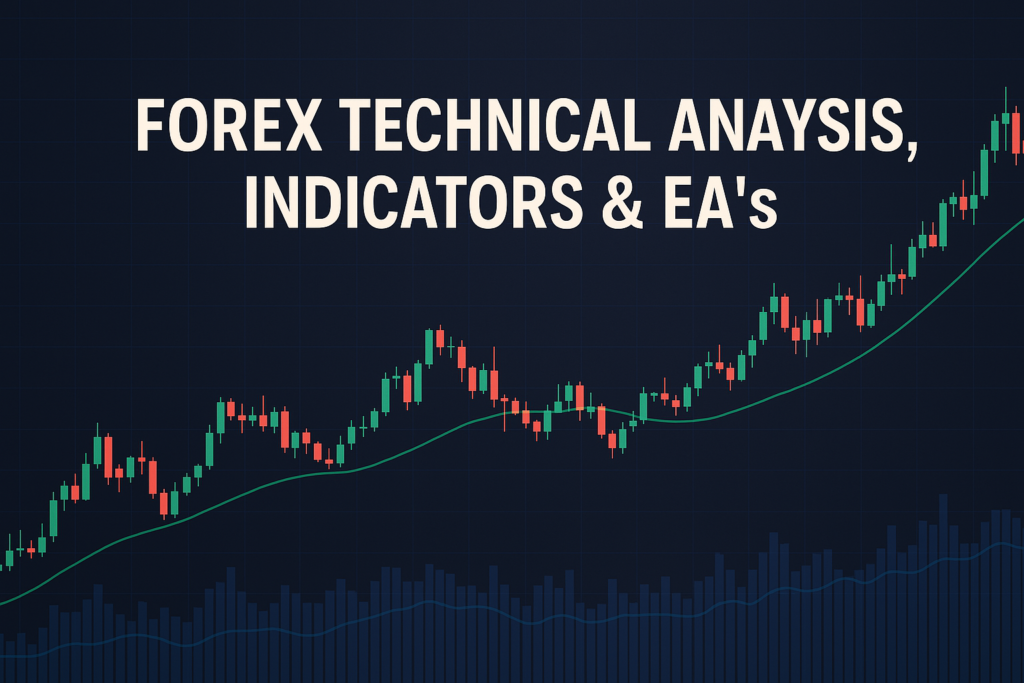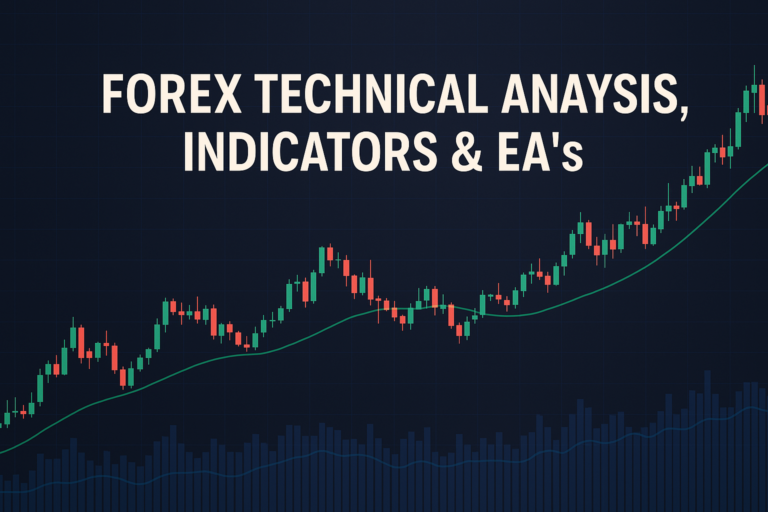
Stochastic lines help traders identify market momentum and potential buy/sell signals for effective Forex trading strategies.
In the world of Forex trading, stochastic lines are like a compass. They help traders navigate through the ups and downs of currency pairs. These lines show where a currency might be heading based on its past movements. They can indicate when a currency is overbought or oversold, helping traders make informed decisions.
However, many traders, whether beginners or seasoned professionals, often struggle to fully grasp the concept of stochastic lines. They may find it challenging to interpret the signals these lines provide. Understanding stochastic lines is crucial for anyone wanting to improve their trading game. It’s not just about buying low and selling high; it’s about timing your trades right.
In this article, we will explore stochastic lines, how they work, and why they are essential for successful Forex trading. We will discuss their history, advantages, disadvantages, and various strategies to effectively apply them.
Sometimes, automated trading systems can interfere with each other, causing confusion in the market. If you want to learn more about this, check out our guide on Automated trading systems interfering with each other.
What is a stochastic lines?
Stochastic lines are tools that traders use to understand market momentum. Imagine you’re watching a runner in a race. If the runner is speeding up, you can expect them to finish strong. Similarly, stochastic lines help you see if a currency is gaining strength or losing it. They look at the closing price of a currency compared to its price range over a specific period. This helps traders spot potential buy or sell opportunities.
Types of stochastic lines
There are different types of stochastic lines, including simple, exponential, and weighted. Each type has its unique formula. For instance, a simple stochastic line gives equal weight to all prices in the period, while an exponential line gives more weight to recent prices. Understanding these types can help you choose which one suits your trading style.
How stochastic lines smooth out price action
Stochastic lines help smooth out price action by filtering out random price movements. Think of it as a filter that shows you the clearer picture of where a currency is heading. By doing this, they help traders avoid making impulsive decisions based on short-term fluctuations.
Common periods used and why
Traders often use common periods like 14, 21, or 30 days. A 14-day period is popular because it balances capturing market trends without being too sensitive to price changes. Choosing the right period depends on your trading style. Shorter periods may give quicker signals, while longer ones provide a broader view of the market.
The History of stochastic lines: How It Became Popular
Origin of stochastic lines
The concept of stochastic lines was developed by George Lane in the late 1950s. He created them to help traders identify market trends and reversals. Lane believed that if a currency is trading near its highs or lows, it could signal potential buying or selling opportunities. His ideas laid the foundation for many traders today.
When did traders start using it widely?
Stochastic lines gained popularity in the 1970s and 1980s. As more traders began to understand technical analysis, they started incorporating stochastic lines into their strategies. This led to a significant shift in how traders approached the market, focusing more on price action and momentum.
Real-life stories
Many professional traders have credited stochastic lines for their success. For example, one trader used stochastic lines to predict a major market shift, leading to substantial profits. These stories inspire many to delve deeper into understanding stochastic lines and how they can enhance their trading strategies.
Advantages and Disadvantages of stochastic lines
Advantages:
- Helps identify trends easily: Stochastic lines clearly show when a currency is overbought or oversold, guiding traders in their decisions.
- Useful for dynamic support and resistance: They can help identify areas where prices may bounce or reverse.
- Works well for crossover strategies: When stochastic lines cross, it can signal potential buy or sell opportunities.
Disadvantages:
- lags behind price movements: Stochastic lines may not react instantly to price changes, leading to missed opportunities.
- Can give false signals in sideways markets: In a flat market, stochastic lines may produce signals that lead to losses.
How to Apply stochastic lines on MT4 & MT5
Step-by-step guide to adding stochastic lines on charts
To add stochastic lines on MT4 or MT5, open your chart and click on the ‘Insert’ menu. Choose ‘Indicators’ and then ‘Oscillators’. Select ‘Stochastic Oscillator’ from the list. This will add the lines to your chart, giving you insights into market movements.
Customizing stochastic lines settings
You can customize stochastic lines by adjusting the periods, colors, and types. For example, if you prefer a more reactive line, you might choose a shorter period. Experimenting with these settings can help you find what works best for your trading style.
Saving templates for easy application
After customizing your stochastic lines, save the template for future use. Right-click on the chart and select ‘Template’ and then ‘Save Template’. This way, you can quickly apply your preferred settings to new charts without starting from scratch each time.
5 to 7 Trading Strategies Using Only stochastic lines
All Time Frame Strategy (M5 to D1)
This strategy works across all time frames. Look for overbought or oversold signals on the stochastic lines. When the lines cross above 80, consider selling. When they drop below 20, think about buying.
Trending Strategies
In a strong trend, use stochastic lines to identify pullbacks. If the currency is trending up, wait for the stochastic lines to drop below 20 and then look for a buying opportunity as the price pulls back.
Counter Trade Strategies
Counter-trading involves going against the trend. If the stochastic lines indicate overbought conditions, you may sell even if the trend is upward, anticipating a correction. Be cautious, though; this strategy requires experience.
Swing Trade Strategies
For swing trading, use stochastic lines to identify potential reversals. If the lines cross below 20, prepare for a buying opportunity. Conversely, if they cross above 80, look for selling opportunities.
5 to 7 Trading Strategies Combining stochastic lines with Other Indicators
All Time Frame Strategy (M5 to D1)
Combine stochastic lines with moving averages. When the price is above the moving average and the stochastic lines hit the 20 level, consider buying. This combo can confirm strong upward momentum.
Trending Strategies
In trending markets, use stochastic lines with Relative Strength Index (RSI). If both indicators signal overbought conditions, this strengthens your reason to sell. The confirmation from multiple indicators increases your chances of success.
Counter Trade Strategies
When counter trading, combine stochastic lines with MACD. If stochastic lines are overbought, and MACD shows a bearish crossover, it’s a strong signal to sell.
Swing Trade Strategies
For swing trades, pair stochastic lines with Fibonacci retracement levels. If the stochastic lines indicate oversold conditions at a key Fibonacci level, consider buying. This adds another layer of analysis to your trade.
For a specific example, check out our GBPUSD Analysis June 25, 2025 for insights on trading strategies.
Top 10 FAQs About stochastic lines
1. What are stochastic lines?
Stochastic lines are indicators that help traders identify overbought and oversold conditions in the market. They compare a currency’s closing price to its price range over a specific period.
2. How do I use stochastic lines?
To use stochastic lines, look for crossovers. A crossover below 20 may indicate a buying opportunity, while a crossover above 80 may signal a sell.
3. What is the best period to use for stochastic lines?
A common period is 14 days, as it balances responsiveness and reliability. However, you can adjust this based on your trading style.
4. Can stochastic lines work in sideways markets?
Stochastic lines can give false signals in sideways markets, making it challenging to trade effectively. It’s best to use them during trending conditions.
5. Are stochastic lines suitable for all trading strategies?
While stochastic lines are versatile, they work best when combined with other indicators or strategies for confirmation.
6. How do I avoid false signals from stochastic lines?
To avoid false signals, look for confirmation from other indicators or use additional analysis such as price action or trend lines.
7. Can I use stochastic lines on any currency pair?
Yes, stochastic lines can be applied to any currency pair. However, they may work better with more volatile pairs.
8. What is the difference between stochastic and RSI?
While both indicators measure momentum, stochastic lines compare closing prices to a range, while RSI measures price changes over time.
9. How can I combine stochastic lines with other tools?
Combine stochastic lines with moving averages, MACD, or Fibonacci retracements for better analysis and stronger signals.
10. Is it necessary to practice before using stochastic lines in real trades?
Absolutely! Practice on a demo account to understand how stochastic lines work and how to interpret their signals effectively.
Conclusion
In summary, stochastic lines are powerful tools in Forex trading that can help you identify trends and potential buy or sell opportunities. Understanding how they work, along with their advantages and disadvantages, is essential for successful trading. Use them wisely, combine them with other strategies, and always practice before trading with real money.
Remember, the key to mastering stochastic lines is patience and practice. Test various strategies and find what fits your trading style best. Happy trading!
If you’re just getting started, this guide can help you grasp the essentials Federal Reserve, Investing.com
Expand Your Knowledge
- 📌 Forex Trading Learning Road Map
- 📌 Forex Trading Course with no Fees
- 📌 Forex Trading Issues, Problems, and Solutions
- 📌 Forex Daily Forecast & Live Updates
- 📌 Forex Fundamental & News Analysis: Tomorrow’s Market Movers & Trade Opportunities
- 📌 Forex Education Hub: Learn & Profit
- 📌 Forex Technical Analysis, Indicators & EA’s
Start Trading Today
Ready to take your forex trading to the next level? Open an account with Exness, one of the most trusted platforms in the industry. 👉 Sign Up Now and trade with confidence!
My recommended broker stands out with ultra-low spreads for beginners, instant withdrawals, and zero spread accounts for pro traders.
Trusted since 2008, lightning-fast execution, no hidden fees, and a secure, transparent trading environment—giving you the edge you need to succeed. 🚀
YouTube Video Library: Related Videos
Note: The video above is embedded from YouTube and is the property of its original creator. We do not own or take responsibility for the content or opinions expressed in the video.



